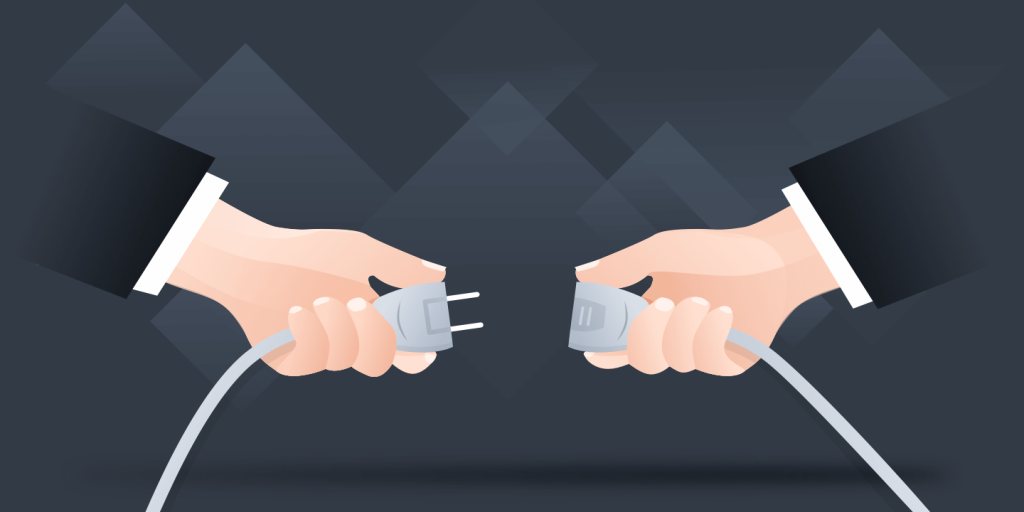Finding real-life strategies to weave your metrics into your day-to-day life at work is the best thing you can do to keep your company healthy and keep your team members engaged.
With so many amazing tools out there, it’s easy to get your hands on tons of customer experience data. There are so many new technologies coming out that it feels like we’re all living in a data playground. There’s a metric for everything, and new tools and AI make it super easy to get a handle on what your customers are feeling, thinking and doing within your product. But having data just for data’s sake isn’t making the most of your potential. You need to dig deeper, analyze it, and then put it to work.
There are many ways to make the most out of the data that you have. Read on to find 10 ways to weave customer-centricity and data-awareness into your company strategy.
 Segment your customers more effectively
Segment your customers more effectively
Creating more effective customer segments impacts your company across multiple teams. It makes it easier for you to communicate marketing messages to the appropriate users, provide quick and efficient support, and can even help with sales communications. CX data, including survey responses, purchasing history, and demographic data, can be used to confirm assumptions you’ve made about who your users are. Consider analyzing your data by asking the following questions:
- What are the problems each segment is trying to solve with your product?
- What are the typical behaviors of a user that is about to cancel or upgrade?
- How frequently do different segments use or purchase our product?
Having up-to-date customer experience data gives all of your segments superpowers! As you’re segmenting, consider how different demographics are interacting with your products and services and consider tweaking their definitions based on real-time customer data.
 Personalize marketing campaigns
Personalize marketing campaigns
There are few things that feel worse to receive than an obviously canned email—it might even be worse than a truly unintentionally ugly holiday sweater. People want to feel like you care about them and know what they like or want. For example, take a look at this website that personalized shopping recommendations based on weather:

 Updating the content on your site based on customer data helps them feel like you care about them and want to be helpful. It can get a little creepy, though, so be careful to not go too far.
Updating the content on your site based on customer data helps them feel like you care about them and want to be helpful. It can get a little creepy, though, so be careful to not go too far.
 Customize your user onboarding
Customize your user onboarding
Using time-based surveying, you can hone in on feedback provided by customers who have just made their first purchase. With that information, you can create onboarding flows, email campaigns or documentation that people will be happy to use.
Text analytics can help you dig deeper into the qualitative feedback customers offer in customer conversations and survey feedback:
- How does the sentiment of new customers compare to long term customers?
- What themes continually arise in customer conversations? (ie. billing questions, mobile app issues, confusion around setting up new users?)
- What information are new customers missing or not finding in your documentation?
Different types of customers will learn better using different types of content. Use your customer experience data to understand what different segments of your customers prefer when it comes to onboarding.
 Identify where to spend your budget
Identify where to spend your budget
By connecting your CX data to financial metrics, you can see where investments will have the biggest impact. Are your biggest customers talking more about X or Y? If you provide free shipping, will repeat customers purchase more often? Is slow customer service upsetting our customers and causing them to leave? Or are they more concerned about being unable to set-up their product and giving up?
Actionable insights can only come from getting granular with your data. Your data should inform decision-making such as inventory management, developing trends for buying, staffing, and additional resource requirements.
 Inform your product roadmap
Inform your product roadmap
Everyone knows that if you listen entirely to customer feedback to build your product roadmap, you’ll get nowhere fast. That doesn’t mean, though, that you shouldn’t listen to it at all. Customers often have ways of using your product that you wouldn’t even expect or imagine. By watching how they’re using it, you can find new opportunities for features or products to add to your product roadmap. It also helps with prioritization: maybe you shouldn’t put a ton of effort into a corner of your product that people don’t use frequently or at all.
Provide more contextual customer service
By sharing your customer experience data with your customer support team, you empower them. With more information at their fingertips, your support team has to ask fewer questions in order to get to a resolution. That’s a better experience for both your customer, who gets a response sooner and your employee, who is able to move on with their day without a ton of back and forth.
To take advantage of your CX data, you’ll need to connect your insights platform with your CRM and your helpdesk. An open API ecosystem means that your data is helpful everywhere you need it. Want your support reps to be proactive? Show them the customer’s upcoming contract renewal date in their help desk view. Show them the customer’s last three survey responses. Show them the customer’s in-app behavior. Armed with information, they can provide better customer service that has a positive impact on revenue.

Analyze customer churn to boost retention
Customer experience data can help you understand why your customers are leaving. One tool that’s particularly helpful for this is a robust NPS program.
Diving deeper into the responses of Detractors can show you exactly what customers are saying before they walk out the door. A CX analytics tool like Kapiche can combine multiple data sources to give you a full picture of what Detractors are looking for.
For instance, if one of the things that people often reference before churning is that they have trouble getting up to speed when first using your product, you could create an onboarding experience to help retain future customers.
 Use it to build automation
Use it to build automation
Automation is an excellent way to take humans out of the picture and free them up to do other work. The best part is that much of automation is powered by data. Use your customer experience data to learn more about the patterns of your customers and proactively assist them with automation. For example, display a piece of documentation that you’ve seen people historically reference during specific pieces of the customer lifecycle.

 Make it so that everyone can see it and use it
Make it so that everyone can see it and use it
Data is most helpful when everyone can see and understand what it means. Create a dashboard that shows some of the key metrics that are cross-functionally important and applicable at your company. Making the data easy to find and consume means that more teams are likely to use it. Putting information at the fingertips of your employees means that all of their decisions can be backed up by actual user data.
Conclusion
It’s nice to have tons of customer experience data, but it’s even nicer to be able to apply it to the work that your company is doing. Use any of the nine tactics to make sure that you are using one of the most valuable resources to boost your team’s productivity.
Being customer-centric is one of the best ways that you could possibly drive revenue to your business. Finding real-life strategies to weave your metrics into your day-to-day life at work is the best thing you can do to keep your company healthy and thriving and keep your team members engaged and excited to learn more about the customer.











